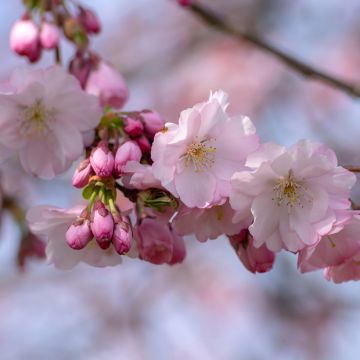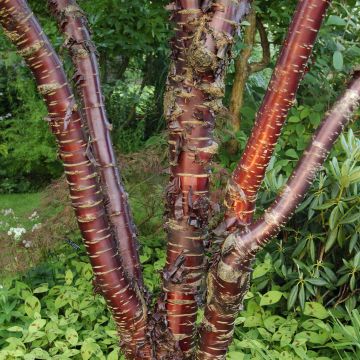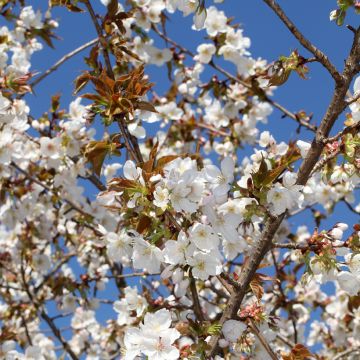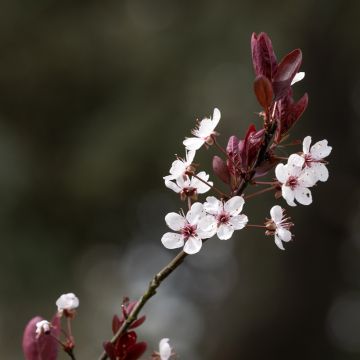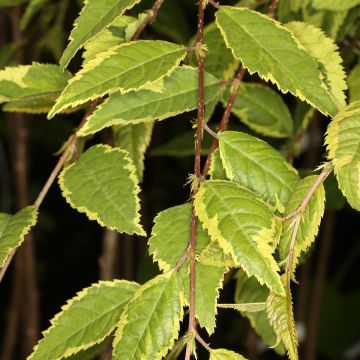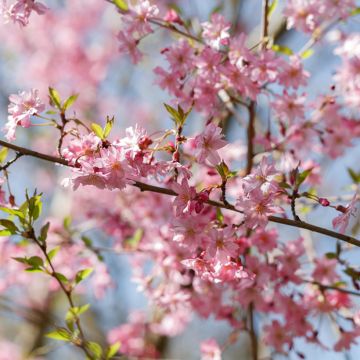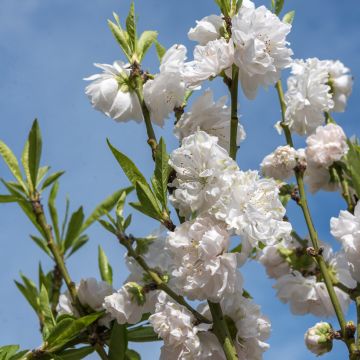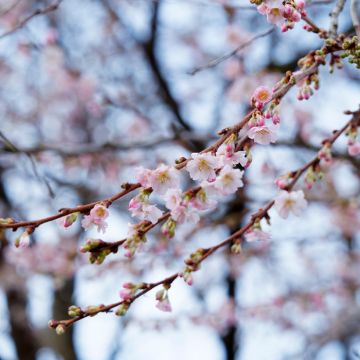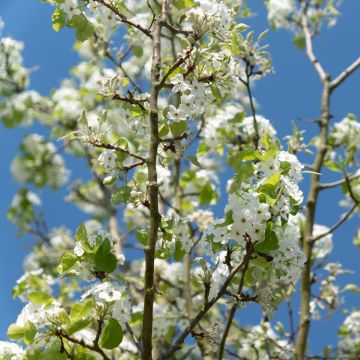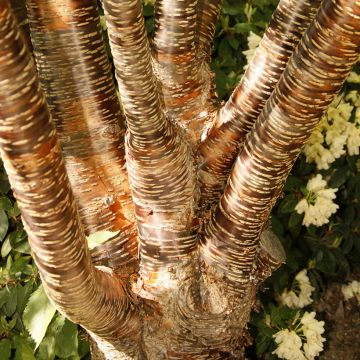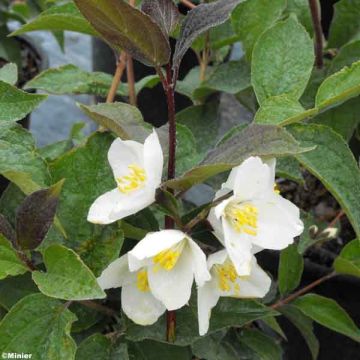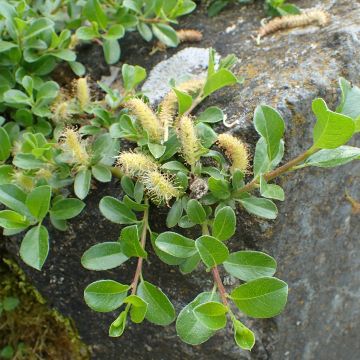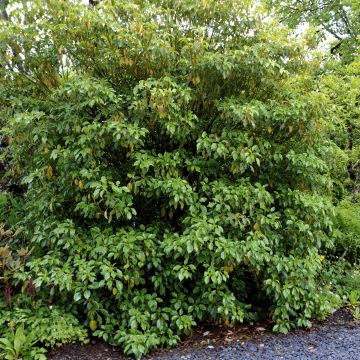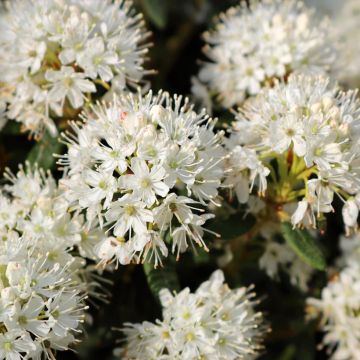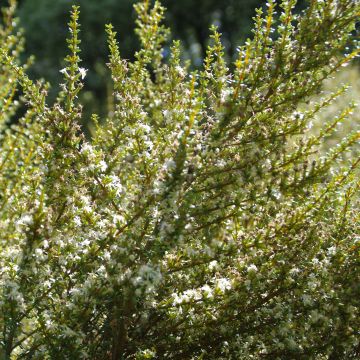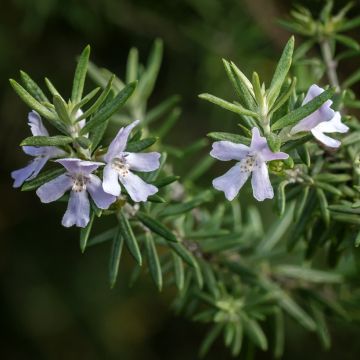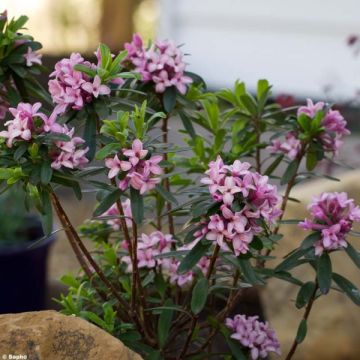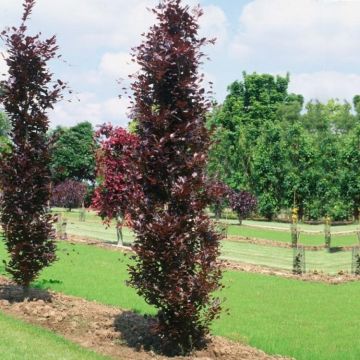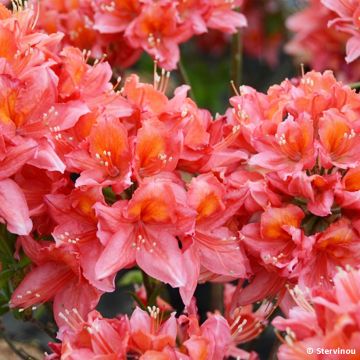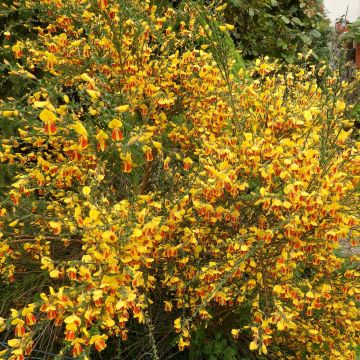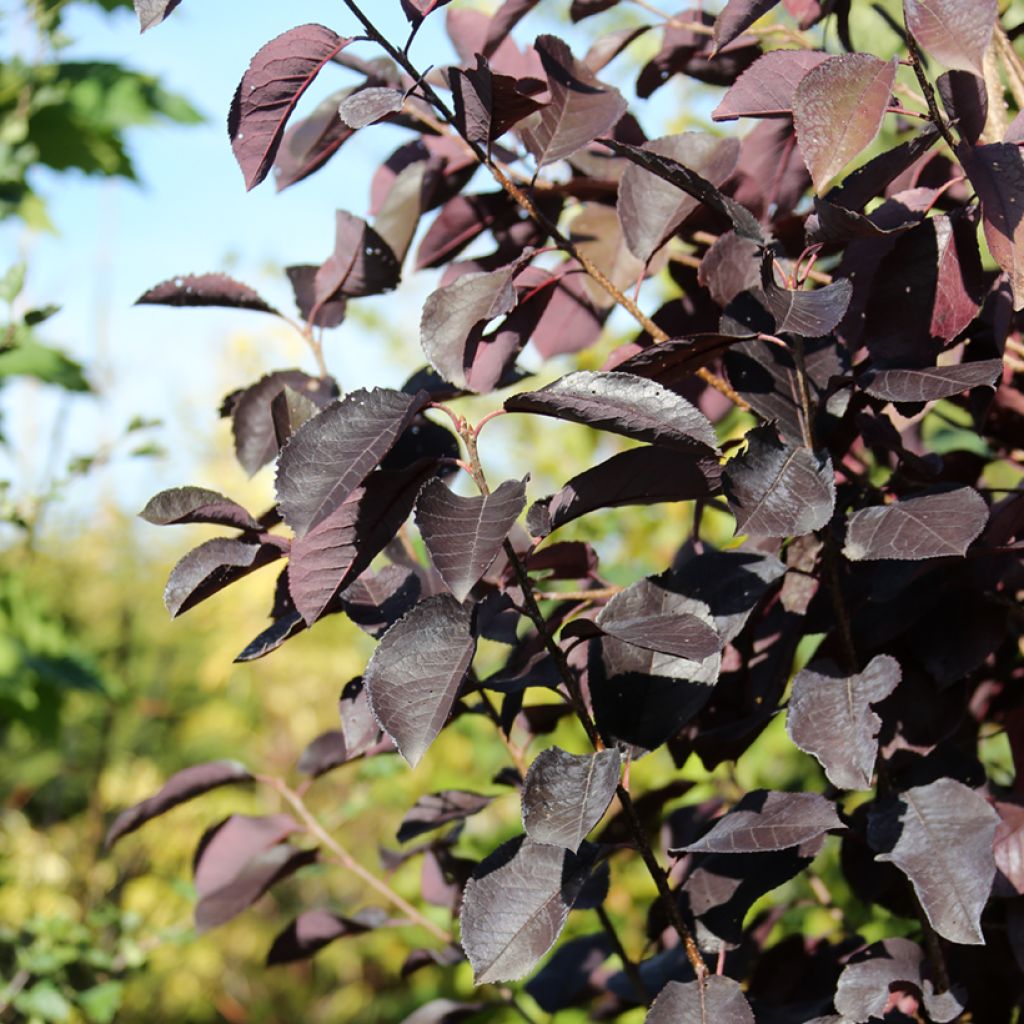

Prunus virginiana Canada Red - Chokecherry
Prunus virginiana Canada Red - Chokecherry
Prunus virginiana Canada Red
Chokecherry, Virginia bird cherry, Flowering cherry tree, Ornemental Cherry tree
This item cannot be shipped to the selected country
Oversize package delivery charge from €6.90
More information
Schedule delivery date,
and select date in basket
This plant carries a 24 months recovery warranty
More information
We guarantee the quality of our plants for a full growing cycle, and will replace at our expense any plant that fails to recover under normal climatic and planting conditions.
Oversize package: home delivery by special carrier from €6.90 per order..
Express home delivery from €8.90.
Does this plant fit my garden?
Set up your Plantfit profile →
Description
Prunus virginiana 'Canada Red' is a variety of Virginia chokecherry that stands out for the beautiful purple colour of its foliage. It is also appreciated for its spring flowering in clusters of small white flowers that nourish bees and its small fruits sought after by birds. This tree will charm with both its ease of cultivation and its ornamental qualities. Suitable for medium-sized gardens, it can be planted as a solitary specimen or integrated into a large country hedge.
Prunus virginiana 'Canada Red' was selected by Mr Niels Hansen (U.S.A) in 1933. It was then marketed by Bailey Nurseries in Newport, Minnesota, in the United States before 1985. The species, the Virginia chokecherry, is native to North America. Like all Prunus, these small trees belong to the rose family. The cultivar 'Canada Red' has an upright and spreading habit, typically reaching 6 to 8 m in height and 4 to 6 m in width at maturity. Its growth is rapid. The tree develops an ovate crown that rounds out over time. Its leaves are broad and elliptical, emerging light green before turning dark purple-red in summer. They retain this colour until early autumn, then turn bright red before falling, quite late in the season. Flowering occurs in May in the form of upright clusters, measuring 7 to 15 cm long, composed of small white flowers with 5 petals measuring 1 cm in diameter. In summer, the tree produces small fruits (8 mm in diameter) of a dark purple-red, which are inedible in their raw state. The bark of this small tree is smooth and grey in young specimens, becoming rougher and more fissured with age. The very hardy Prunus virginiana 'Canada Red' can withstand temperatures down to -30 °C.
Prunus virginiana 'Canada Red' is a very hardy tree that will thrive in many regions, as long as it has deep soil that is not too dry in summer. It should be planted in an open position, as a solitary specimen on a lawn or in a large cluster of trees planted sparsely. It pairs well with many spring-flowering bushes and small trees, either simultaneously or at different times, such as ornamental crab apples, serviceberries, Prunus mahaleb, medlar trees, blackthorn, hawthorns...
Report an error about the product description
Plant habit
Flowering
Foliage
Botanical data
Prunus
virginiana
Canada Red
Rosaceae
Chokecherry, Virginia bird cherry, Flowering cherry tree, Ornemental Cherry tree
North America
Other Prunus
Planting and care
Prunus virginiana 'Canada Red' is best planted in autumn or very early spring. It enjoys full sun and well-drained, deep, rich soil that is not too dry. It does not appreciate excessively hot and dry exposures, nor heavy clay soils saturated with water, or the shade of large trees. Water regularly during the first two years to help it establish, and mulch around the base to conserve moisture. Dig a large planting hole to allow it to settle in more quickly.
Planting period
Intended location
Care
This item has not been reviewed yet - be the first to leave a review about it.
Spring-flowering shrubs
Haven't found what you were looking for?
Hardiness is the lowest winter temperature a plant can endure without suffering serious damage or even dying. However, hardiness is affected by location (a sheltered area, such as a patio), protection (winter cover) and soil type (hardiness is improved by well-drained soil).

Photo Sharing Terms & Conditions
In order to encourage gardeners to interact and share their experiences, Promesse de fleurs offers various media enabling content to be uploaded onto its Site - in particular via the ‘Photo sharing’ module.
The User agrees to refrain from:
- Posting any content that is illegal, prejudicial, insulting, racist, inciteful to hatred, revisionist, contrary to public decency, that infringes on privacy or on the privacy rights of third parties, in particular the publicity rights of persons and goods, intellectual property rights, or the right to privacy.
- Submitting content on behalf of a third party;
- Impersonate the identity of a third party and/or publish any personal information about a third party;
In general, the User undertakes to refrain from any unethical behaviour.
All Content (in particular text, comments, files, images, photos, videos, creative works, etc.), which may be subject to property or intellectual property rights, image or other private rights, shall remain the property of the User, subject to the limited rights granted by the terms of the licence granted by Promesse de fleurs as stated below. Users are at liberty to publish or not to publish such Content on the Site, notably via the ‘Photo Sharing’ facility, and accept that this Content shall be made public and freely accessible, notably on the Internet.
Users further acknowledge, undertake to have ,and guarantee that they hold all necessary rights and permissions to publish such material on the Site, in particular with regard to the legislation in force pertaining to any privacy, property, intellectual property, image, or contractual rights, or rights of any other nature. By publishing such Content on the Site, Users acknowledge accepting full liability as publishers of the Content within the meaning of the law, and grant Promesse de fleurs, free of charge, an inclusive, worldwide licence for the said Content for the entire duration of its publication, including all reproduction, representation, up/downloading, displaying, performing, transmission, and storage rights.
Users also grant permission for their name to be linked to the Content and accept that this link may not always be made available.
By engaging in posting material, Users consent to their Content becoming automatically accessible on the Internet, in particular on other sites and/or blogs and/or web pages of the Promesse de fleurs site, including in particular social pages and the Promesse de fleurs catalogue.
Users may secure the removal of entrusted content free of charge by issuing a simple request via our contact form.
The flowering period indicated on our website applies to countries and regions located in USDA zone 8 (France, the United Kingdom, Ireland, the Netherlands, etc.)
It will vary according to where you live:
- In zones 9 to 10 (Italy, Spain, Greece, etc.), flowering will occur about 2 to 4 weeks earlier.
- In zones 6 to 7 (Germany, Poland, Slovenia, and lower mountainous regions), flowering will be delayed by 2 to 3 weeks.
- In zone 5 (Central Europe, Scandinavia), blooming will be delayed by 3 to 5 weeks.
In temperate climates, pruning of spring-flowering shrubs (forsythia, spireas, etc.) should be done just after flowering.
Pruning of summer-flowering shrubs (Indian Lilac, Perovskia, etc.) can be done in winter or spring.
In cold regions as well as with frost-sensitive plants, avoid pruning too early when severe frosts may still occur.
The planting period indicated on our website applies to countries and regions located in USDA zone 8 (France, United Kingdom, Ireland, Netherlands).
It will vary according to where you live:
- In Mediterranean zones (Marseille, Madrid, Milan, etc.), autumn and winter are the best planting periods.
- In continental zones (Strasbourg, Munich, Vienna, etc.), delay planting by 2 to 3 weeks in spring and bring it forward by 2 to 4 weeks in autumn.
- In mountainous regions (the Alps, Pyrenees, Carpathians, etc.), it is best to plant in late spring (May-June) or late summer (August-September).
The harvesting period indicated on our website applies to countries and regions in USDA zone 8 (France, England, Ireland, the Netherlands).
In colder areas (Scandinavia, Poland, Austria...) fruit and vegetable harvests are likely to be delayed by 3-4 weeks.
In warmer areas (Italy, Spain, Greece, etc.), harvesting will probably take place earlier, depending on weather conditions.
The sowing periods indicated on our website apply to countries and regions within USDA Zone 8 (France, UK, Ireland, Netherlands).
In colder areas (Scandinavia, Poland, Austria...), delay any outdoor sowing by 3-4 weeks, or sow under glass.
In warmer climes (Italy, Spain, Greece, etc.), bring outdoor sowing forward by a few weeks.

































